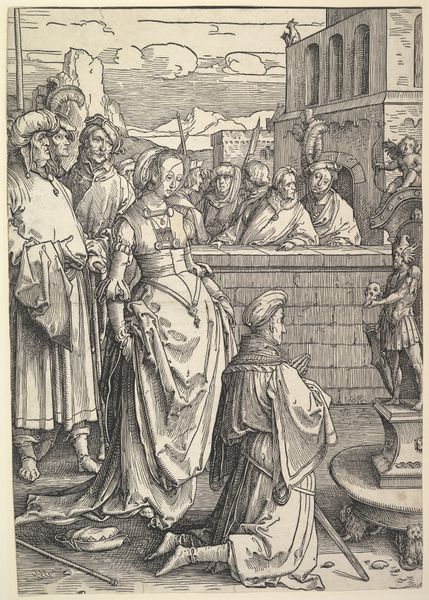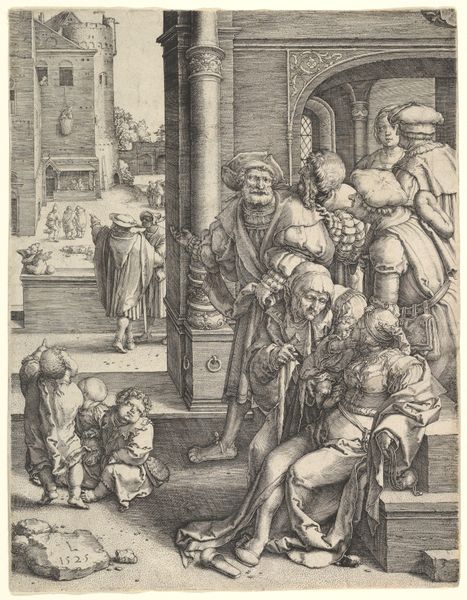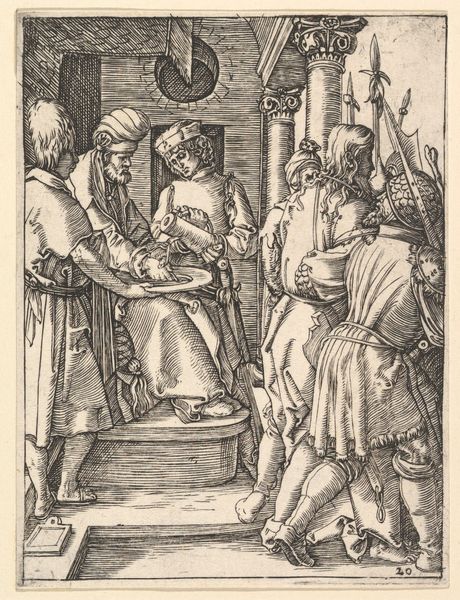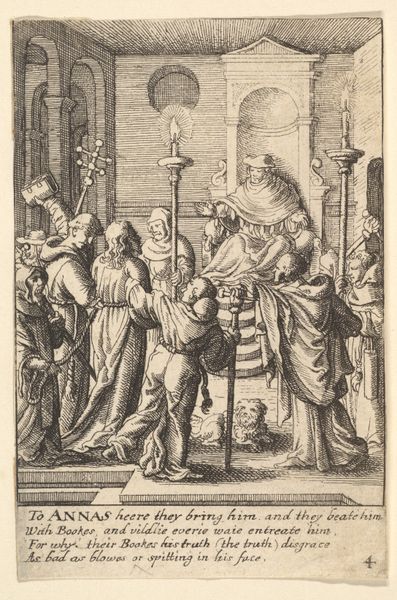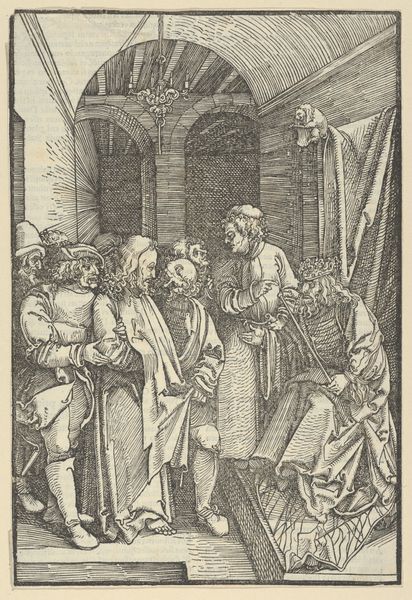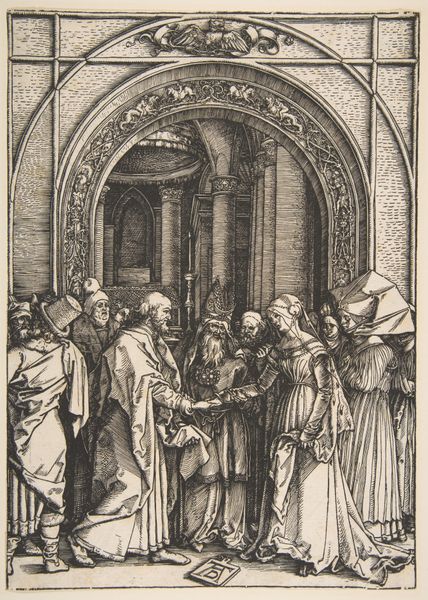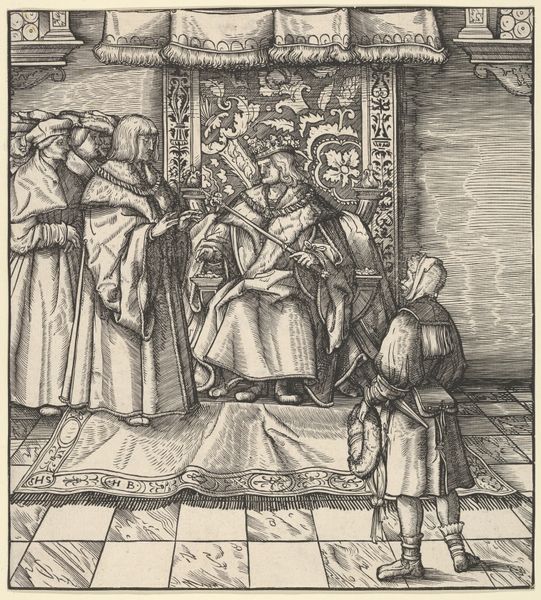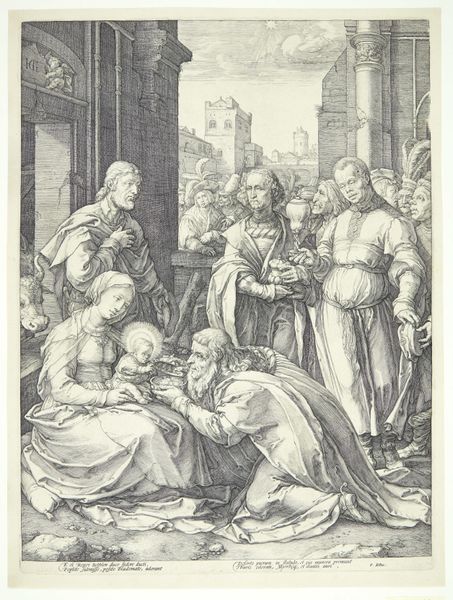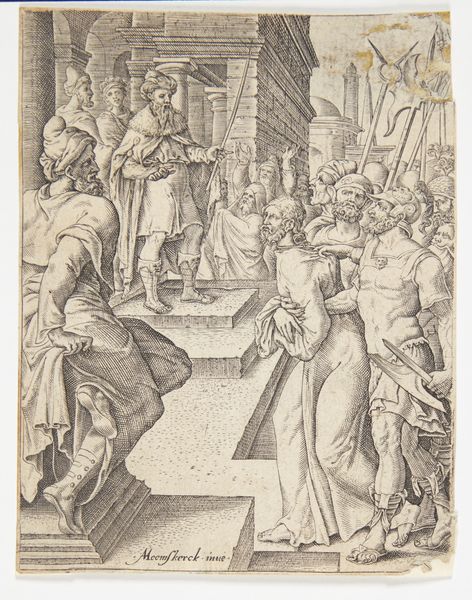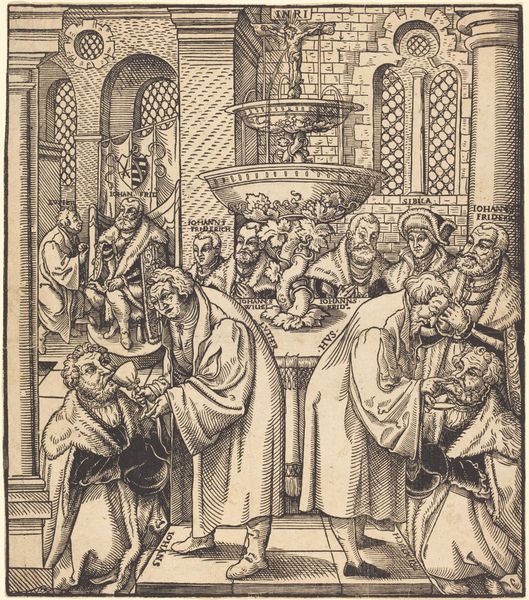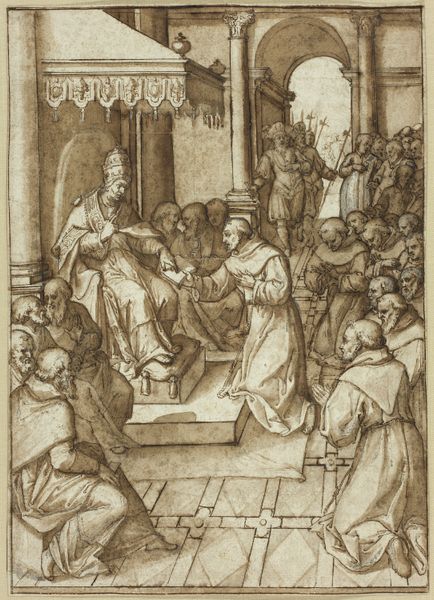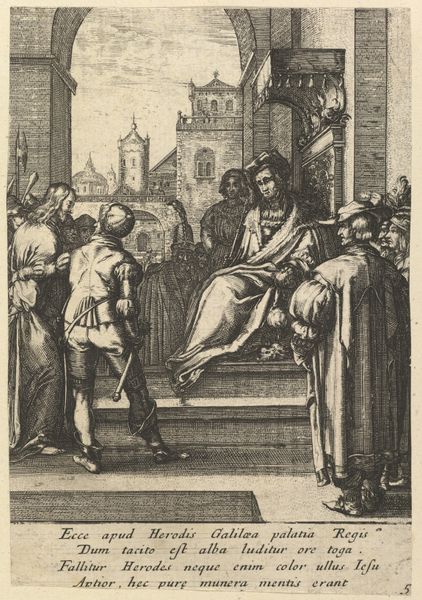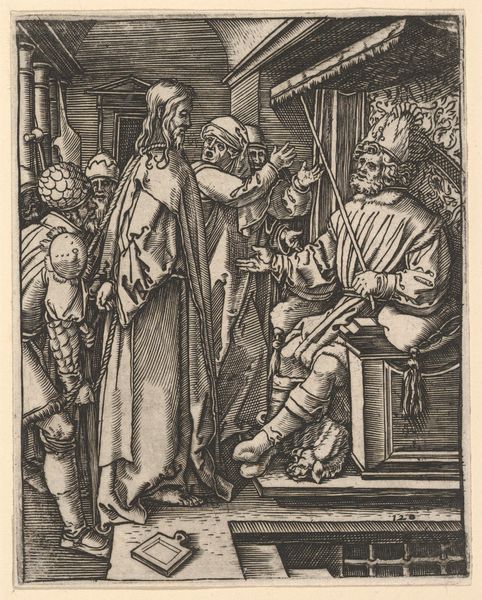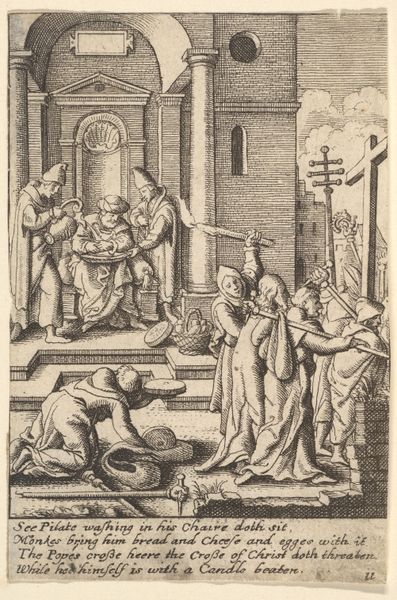
print, woodcut
#
narrative-art
# print
#
figuration
#
woodcut
#
line
#
history-painting
#
northern-renaissance
Dimensions: 16 3/8 x 11 9/16 in. (41.59 x 29.37 cm) (image)
Copyright: Public Domain
Lucas van Leyden's "Solomon's Idolatry," rendered in ink on laid paper, presents a scene laden with symbolic weight. Here, Solomon kneels before an idol, urged by his wife, while onlookers observe. This act, a surrender to pagan worship, is a powerful visual metaphor for the corruption of wisdom through earthly temptations. The idol itself, a figure holding a skull, echoes ancient memento mori motifs, reminding us of mortality. The theme of mortality and vanity is visible in the vanitas paintings of later Dutch masters, reappearing as a subtle yet potent reminder of human frailty. Consider the act of kneeling: a gesture of reverence twisted into submission to false gods. This posture, recurring across cultures in both sacred and secular contexts, reveals our deep-seated need to submit to higher powers or ideals. The emotional tension in this piece stems from the tragic fall of a wise king, reminding us that even the greatest are susceptible to base desires. This deeply rooted anxiety about moral decline resonates through time.
Comments
minneapolisinstituteofart almost 2 years ago
⋮
This print's moralizing tone is clear from the man at left, who instructs a mustachioed dandy on how a woman can turn even the wise Solomon into a fool. Related to the Power of Women theme is the folly of caring too deeply about temporal qualities such as strength and wisdom, and the idol here reflects this idea. The military costume suggests the vanity of power; the skull symbolizes the transience of earthly pursuits. The sin of lust is represented by the two dogs sitting just where Solomon's sword points.
Join the conversation
Join millions of artists and users on Artera today and experience the ultimate creative platform.
